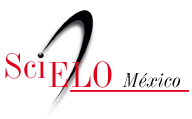Damage assessment in concrete structures using piezoelectric based sensors
DOI:
https://doi.org/10.21041/ra.v7i1.173Keywords:
PZT, electro-mechanical impedance, conductance, microcracksAbstract
Piezoelectric based PZT (Lead Zirconate Titanate) smart sensors offer significant potential for continuously monitoring the development and progression of internal damage in concrete structures. Changes in the resonant behavior in the measured electrical conductance obtained from electro-mechanical (EM) response of a PZT bonded to a concrete substrate is investigated for increasing levels of damage. Changes in the conductance resonant signature from EM conductance measurements are detected before visible signs of cracking. The root mean square deviation of the conductance signature at resonant peaks is shown to accurately reflect the level of damage in the substrate. The findings presented here provide a basis for developing a sensing methodology using PZT patches for continuous monitoring of concrete structures.
Downloads
References
Ayres, J. W., Lalande, F., Chaudhry, Z., and Rogers, C. A. (1998), “Qualitative impedance-based health monitoring of civil infrastructures”, Smart Materials and Structures, Vol. 7, No.5, pp.599-605.
Bhalla, S., and Soh, C. K. (2004), “Structural health monitoring by Piezo-Impedance Transducers. I: Modeling”, Journal of Aerospace Engineering, Vol. 17, No.4, pp.154–165.
Chaudhry, Z., Joseph, T., Sun, F., and Rogers, C. A. (1995), “Local-area health monitoring of aircraft via piezoelectric actuator/sensor patches”, Proceedings, SPIE North American Conference on Smart Structures and Materials, pp.268-276.
Dongyu, X., Chenga, X., Huanga, H., and Jiang, M. (2010), “Identifying technology for structural damage based on the impedance analysis of piezoelectric sensor”, Construction and Building Materials, Vol.24, No.12, pp. 2522-2527.
Giurgiutiu, V., Zagrai, A. N., and Bao, J. J. (2002), “Piezoelectric wafer embedded active sensors for aging aircraft structural health monitoring”, Structural Health Monitoring, Vol.1, No.1, pp.41-61.
Giurgiutiu, V., Zagrai, A. N., and Bao, J. J. (2004), “Damage identification in aging aircraft structures with piezoelectric wafer active sensors”, Journal of Intelligent Material Systems and Structures, Vol.15, No.9, pp.673-687.
Liang, C., Sun, F. P., and Rogers, C. A. (1994), “An impedance method for dynamic analysis of active material systems”, Journal of Vibration and Acoustics, Vol.116, No.1, pp.120-128.
Lim, Y. Y., Bhalla, S., and Soh, C. K. (2006), “Structural identification and damage diagnosis using self-sensing piezo-impedance transducers”, Smart Materials and Structures, Vol.15, No.4, pp.987-995.
Narayanan, A. and Subramaniam, K. V. L. (2016a), “Experimental evaluation of load-induced damage in concrete from distributed microcracks to localized cracking on electro-mechanical impedance response of bonded PZT”, Construction and Building Materials, Vol. 105, pp.536-544.
Narayanan, A. and Subramaniam, K. V. L. (2016b), “Sensing of damage and substrate stress in concrete using electro-mechanical impedance measurements of bonded PZT patches”, Smart Materials and Structures, Vol. 25, No. 9, p.095011.
Park, G., Cudney, H., and Inman, D. (2000), “Impedance-based health monitoring of civil structural components”, Journal of Infrastructure Systems, Vol.6, No.4, pp.153–160.
Peairs, D. M., Park, G., and Inman, D. J. (2004), “Improving accessibility of the impedance-based structural health monitoring method”, Journal of Intelligent Material Systems and Structures, Vol.15, No.2, pp.129-139.
Sun, F. P., Chaudhry, Z., Liang, C., and Rogers. C. A. (1995), “Truss structure integrity identification using PZT sensor-actuator”, Journal of Intelligent Material Systems and Structures, Vol.6, No.1, pp.134-139.
Tseng, K. K., and Wang, L. (2004), “Smart piezoelectric transducers for in situ health monitoring of concrete”, Smart Materials and Structures, Vol.17, No.5, pp.1017-1024.
Wang, D., Song, H., and Zhu. H. (2013), “Numerical and experimental studies on damage detection of a concrete beam based on PZT admittances and correlation coefficient”, Construction and Building Materials, Vol.49, pp.564–574.
Xu, Y. G., and Liu, G. R. (2002), “A modified electro-mechanical impedance model of piezoelectric actuator-sensors for debonding detection of composite patches”, Journal of Intelligent Material Systems and Structures, Vol.13, No.6, pp.389-396.
Yang, Y., Hu, Y., Lu, Y., (2008), "Sensitivity of PZT impedance sensors for damage detection of concrete structures,” Sensors, Vol. 8, No. 1, pp. 327-346.
Yang, Y., Xu, J., and Soh, C. K. (2005), “Generic impedance-based model for structure-piezoceramic interacting system”, Journal of Aerospace Engineering, Vol.18, No.2, pp.93-101.
Zagrai, A.N., and Giurgiutiu, V. (2001), “Electro-mechanical impedance method for crack detection in thin plates”, Journal of Intelligent Material Systems and Structures, Vol.12, No.10, pp.709-718.
Published
How to Cite
Issue
Section
License
_______________________________
License in effect from September 2020
You are free to:
- Share — copy and redistribute the material in any medium or format for any purpose, even commercially.
- Adapt — remix, transform, and build upon the material for any purpose, even commercially.
- The licensor cannot revoke these freedoms as long as you follow the license terms.
Under the following terms:
- Attribution — You must give appropriate credit , provide a link to the license, and indicate if changes were made . You may do so in any reasonable manner, but not in any way that suggests the licensor endorses you or your use.
- No additional restrictions — You may not apply legal terms or technological measures that legally restrict others from doing anything the license permits.
Notices:
You do not have to comply with the license for elements of the material in the public domain or where your use is permitted by an applicable exception or limitation .
No warranties are given. The license may not give you all of the permissions necessary for your intended use. For example, other rights such as publicity, privacy, or moral rights may limit how you use the material.





















.png)














